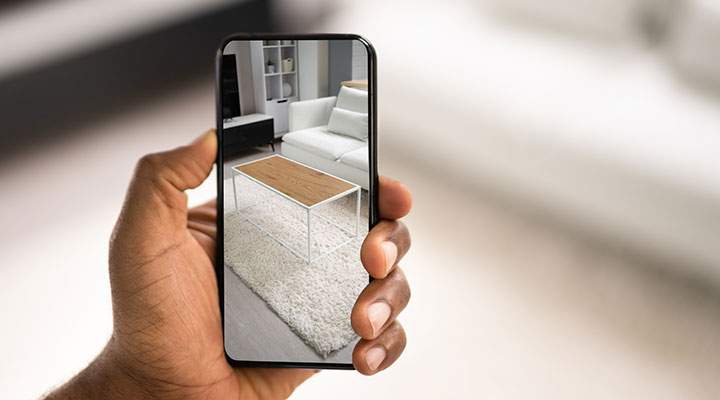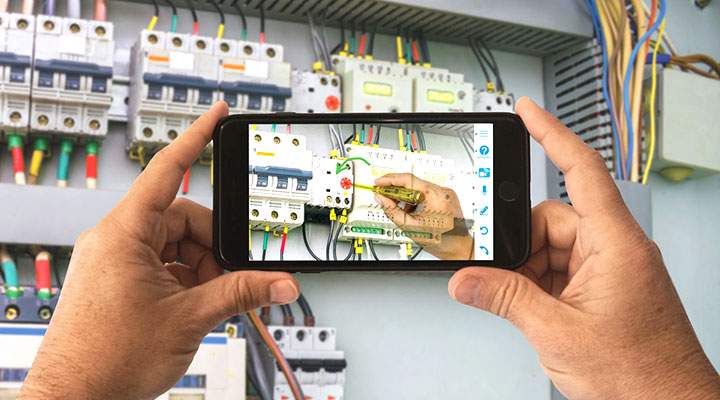Help Lightning Blog
Augmented Reality Examples to Inspire Your Business

Though it’s growing in popularity, not every business has the augmented reality examples it needs to clearly see how this technology fits their business. HubSpot thinks the market is ready to explode, though — reporting that Apple CEO Tim Cook has said that AR will one day become as important in our day-to-day lives as “eating three meals a day.”
Right now, AR may be a novelty but, as more companies capitalize on the benefits, they’ll need to get sharper and more thoughtful about how they implement this technology in their current operations.
The data backs this up. The global AR market — accelerated in part by the COVID-19 pandemic — is projected to grow from $6.12 billion in 2021 to $97.8 billion by 2028. The rapid growth is because AR is adaptable and has a wide range of use cases across both vertical and horizontal industries. Manufacturing, health care, logistics, education and retail are all poised to benefit from reduced customer churn, cost savings and efficiency improvements across all departments, from training and maintenance to sales.
Let’s explore three augmented reality examples that may inspire you to push the envelope and differentiate your company in your industry, boost revenue growth and bring customer satisfaction scores up.
Streamlined Purchases

Have you ever had trouble visualizing how a new sofa would look in your living room? Ikea has been troubleshooting this issue since 2017 with their free AR-powered app. It allows users to test out their products in real time through Apple’s ARKit technology. You can see with 98% accuracy a “realistically rendered, true-to-scale 3D product” in your home before you buy.
The retail giant’s app makes furniture shopping a breeze by first scanning the room through an iPhone or iPad camera. Users can then browse more than 2,000 products in Ikea’s online database and make their selections. Once chosen, a user points their device’s camera to the desired spot in the room, then they can drag and drop products into the space. The app can manifest large items like sofas, armchairs, coffee tables and storage solutions.
As a result, customers feel more confident about purchasing big items. Ikea also sees fewer returns since items are more likely to be a good fit based on the AR-powered screening.
Safer Operations

Another of the biggest augmented reality examples involves the United States Army, which has expressed an interest in leveraging AR for training purposes. Now, it’s expanding to real-time combat. Microsoft has a contract to provide augmented reality headsets worth up to $21.9 billion over the next 10 years.
The HoloLens headset — with a price tag of $3,500 each — will enable soldiers to see holograms “overlaid over their actual environments.” They’ll also be able to interact using hand and voice gestures. Another headset, the IVAS — which is still a prototype — can display a map and compass. It includes thermal imaging to reveal people in the dark and it could also help aim a weapon.
All in all, this comprehensive augmented reality solution will train soldiers more efficiently, enhance communications and keep combatants safer on the ground.
Increased Support

What if customers could show your service representatives the problem instead of grasping at straws? What if you could onboard employees more quickly, train staff more efficiently and troubleshoot without long travel times and vehicle costs? What if you could do all this while seeing a 30% uptick in customer satisfaction scores?
Those are some of the revenue-generating benefits Help Lightning’s AR-powered software delivers. Otherwise known as remote first service, this visual support technology leverages AR software to easily accomplish tasks in shorter times. This triggers customer growth and leads to capital savings for your business.
Through our augmented reality remote assistance experience:
- Customers can draw on the screen, freeze images, use hand gestures to indicate a certain instruction or change and add real objects to the video environment.
- Trainees and frontline workers can easily access collaboration tools for remote teams. This reduces the need for additional vehicle costs or secondary calls to a site.
- Customer agents and clients can access AR software via a link, which lowers upfront costs compared to downloading or installing an app.
- Calls can be recorded and sent to experts. This allows technicians to see the problem in exact detail the problem and troubleshoot more effectively.
This remote assistance software is specifically designed to be flexible and adaptable across multiple business scenarios, including but not limited to:
- Reducing equipment downtime.
- Increasing first-time fix rates.
- Reducing vehicle costs.
- Training individuals to operate complex equipment.
- Presale site visits.
AR software has so many more uses! Check out our list of 20 primary use cases for making the most of remote first service using our best enterprise remote support software.
Want to learn more about augmented reality examples and how Help Lightning’s best remote support software has the power to exponentially grow your business? Request a free no-obligation demo.












